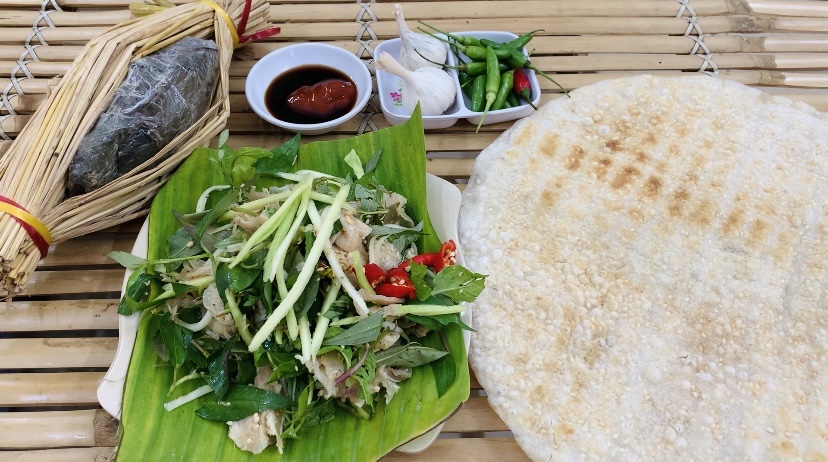Despite tre (fermented pork) being widely available in some provinces along the central region, Binh Dinh’s fermented pork stands out due to its processing technique and quality ingredients.
Tre is made using boiled pork meat, ears and skin. To avoid the tre tasting fishy, the cook chooses fresh pork meat, washes it with wine and steams it for about one hour with crushed ginger and salt. The meat is placed in a bowl of ice water to retain its crispiness.
Boiled pork skin together with boiled pork meat and ears are cut into thin strips. They are mixed with galangal, powdered grilled rice, sesame seeds and spices.
To reduce the fatty taste of pork meat while retaining the specific taste of tre, the Binh Dinh people wrap tre in old guava leaves and then with a layer of plastic. Finally, the roll is tied with dry straw. Tre is ready to be enjoyed after three days of fermenting. For a richer flavor, it can be fermented for five days.
People usually mix tre with other ingredients and spices to enhance the flavor. After removing the guava leaves and plastic cover, the cook places tre in a small bowl and shreds the pork into small bits. Sliced cucumbers, garlic, chili, pepper, and herbs are mixed in. Some vendors even add quail eggs, sliced Vietnamese steamed pork sausage and Vietnamese beef bologna to make the dish tastier.









